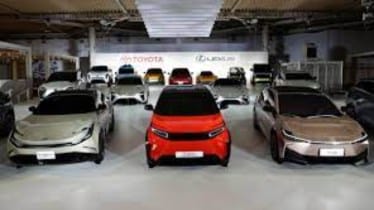Introduction
As the world accelerates its transition towards sustainable transportation, electric vehicles (EVs) have emerged as the frontrunners in the global automotive industry. While countries like Japan have long held dominance in the realm of internal combustion engines (ICEs), there is growing optimism that India has the potential to become a global leader in electric mobility. In this article, on the occasion of EV Day, we will explore India’s journey towards EV leadership and shed light on the parallels it shares with Japan’s historical dominance in ICEs, while also presenting relevant data and figures to support our analysis.
India’s EV Day: Celebrating Progress
EV Day is not just an occasion to celebrate the present but also an opportunity to reflect on India’s EV journey. Over the past few years, India has made significant strides in embracing electric mobility. The government’s ambitious “National Electric Mobility Mission Plan” (NEMMP) has laid the foundation for the growth of EVs in the country. With policies and incentives aimed at boosting EV adoption, India is on track to become a major player in the global electric vehicle market.
A Comparative Analysis: Japan’s ICE Dominance vs. India’s EV Ascent
Early Industry Investment: In the 20th century, Japan invested heavily in the development of its automobile industry, particularly in the production of ICE vehicles. Similarly, India is now channeling substantial resources into EV infrastructure, manufacturing, and research and development. The recent initiatives such as the Faster Adoption and Manufacturing of Hybrid and Electric Vehicles (FAME) scheme and incentives for EV manufacturing showcase India’s commitment to this cause.
Technological Innovation: Japan’s automakers, such as Toyota and Honda, are renowned for their technological prowess in ICE vehicles. India’s EV manufacturers are rapidly catching up, with innovations in battery technology, charging infrastructure, and electric vehicle design. Indian companies are also actively exploring partnerships with global tech giants to enhance EV technology.
Global Partnerships: Japan’s ICE industry gained prominence through strategic partnerships and collaborations with international manufacturers. Similarly, India is forming partnerships with global automakers, battery manufacturers, and tech companies to accelerate the growth of its EV sector. These collaborations are expected to bolster India’s standing in the global EV landscape.
Market Size and Potential: Japan’s ICE industry was buoyed by its significant domestic market and export potential. India’s massive population and growing middle class offer a substantial market for EVs. As affordability and charging infrastructure improve, the Indian EV market is poised for exponential growth.
Data and Figures: India’s EV Growth Trajectory
Market Growth: In the first seven months of CY2023, the sector recorded cumulative sales of 838,766 units, which are 82% of the record 10,24,806 unit sales in CY2022. The Indian government’s commitment to a substantial EV fleet by 2030 is a key driver of this growth.
Mineral Security Partnership (MSP): India’s quest to become a global leader in EVs extends beyond manufacturing and adoption. The country has strategically positioned itself by joining the coveted Mineral Security Partnership (MSP). This initiative focuses on securing access to critical minerals required for battery production. As we know, batteries are the heart of any electric vehicle, and securing a stable supply of raw materials is paramount. By being part of the MSP, India is ensuring a steady flow of essential minerals, reducing its dependence on imports, and strengthening its position in the global EV market.
Charging Infrastructure: EV Charging infrastructure is expanding rapidly in India, as the country had 9,113 operational public charging stations with 15,493 chargers as of July 31, according to data from the Bureau of Energy Efficiency (BEE). An additional 22,000 public EV charging stations are expected to be installed by December 2024.
Consumer Adoption: The search for cost-effective modes of transportation and reducing carbon footprint, coupled with government policy initiatives like FAME and Production Linked Incentive (PLI) schemes, among others, to boost adoption, has led to increased traction in sales. Electric two and three-wheelers have been the main growth drivers of the sales in the first half of CY 2023. Two-wheelers, with 489,640 units, account for 58%, while three-wheelers at 246,270 units take a 36% share of the EV pie. On the other hand, with sales of 46,163, electric cars and SUVs accounted for a 5.5% share.
Japan’s Automotive Legacy and Innovation
Japan’s automotive industry has undergone significant growth and innovation. Beginning in the 1920s with modest production, it surged in the 1960s to become a formidable force. Pioneered by Toyota’s renowned production methods, such as the Toyota Production System, the sector continued to expand throughout the 20th century along with automakers like Honda and Nissan that also gained prominence.
Auto production is one of Japan’s most important industries, accounting for almost 20% of manufacturing in the country and 8% of employment. Technological advancements, such as hybrid and now electric vehicles, showcase Japan’s commitment to sustainability. Japan continues to be a major hub for automotive innovation, with a focus on autonomous driving and eco-friendly technologies. In 2019, Japan’s auto market was estimated at 5,093 thousand units and is expected to grow to 5,195 thousand units in 2026, as per estimates.
Conclusion: India’s quest to become an EV leader bears striking similarities to Japan’s historical dominance in ICEs. The country has made commendable progress, and the data and figures demonstrate the upward trajectory of India’s electric mobility sector. With continued government support, technological advancements, and strategic collaborations, India is poised to emerge as a global leader in electric vehicles. As we celebrate EV Day, let us acknowledge the tremendous potential India holds in shaping the future of sustainable transportation.
